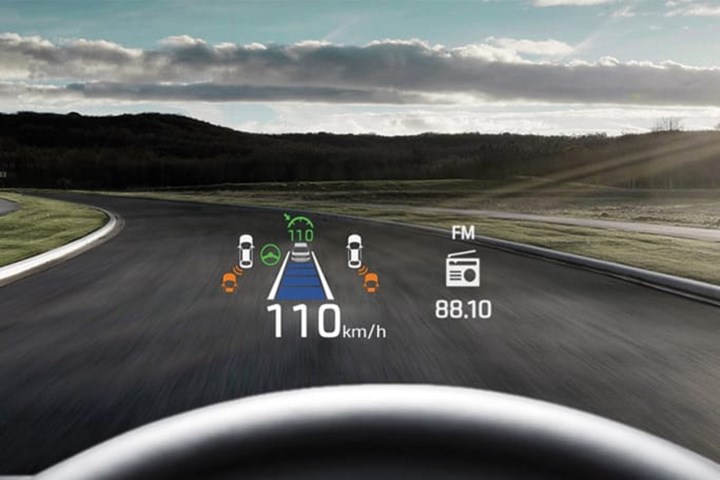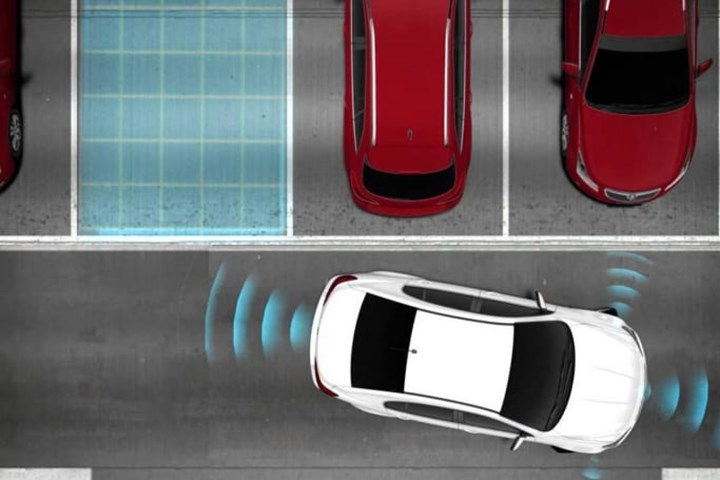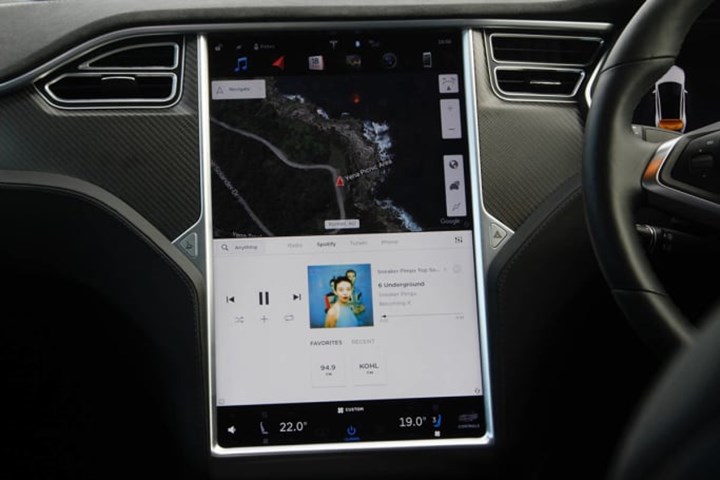
Has technology genuinely made our lives better? It’s one to ponder when you’re in the queue at the supermarket, or a doctor’s waiting room, or on a plane waiting to take off, as you watch every single human being bewitched by Steve Jobs’ devilish devices.
But it’s also one to wonder about when you drive modern cars, with their seemingly unending acronyms, tantalising touchscreens and, to re-tweet the latest buzz word, ‘connectivity’.
The answer, in the car case, is a resounding yes. Technology has made life better, because driving in, or being followed by, a car that can automatically apply the brakes and save you from all-too-human error and a painful crash is definitely more a help than hindrance. As are ABS, traction control and stability programs.
But it’s also a pretty firm no, in some cases, because many of the car companies’ new tech tricks are still in their painful teething stages, and some things designed to make our lives easier only make them feel longer, and could even lead to them being shortened, by distracting us at the wheel.
It was the same when fuel-saving stop-start technology was in its infancy. Clever as it was, car companies were still struggling with getting your engine to switch back on instantaneously when you went for the throttle, and I’ll never forget trying to merge into a fast-moving roundabout in Europe in some start-stop prototype and finding the engine was still asleep. Terrifying tech, indeed.
Today, stop-start systems are generally just annoying, but they’re getting less so all the time.
Let us start, though, on a positive note, with the ways that technology is definitely making our lives as road users better.
Active Safety Systems
We can’t really call ABS modern technology any more, because it’s been on cars since 1971 and bikes since 1988, but the improvements that have followed it have taken the idea of active safety – systems that will prevent you from having an accident rather than protect you once it’s happened (passive-safety features include crash structures and airbags, which are another life-improving bit of tech) – to new and wondrous levels.
Electronic Stability Programs and traction-control systems are things we now take for granted, but there is no doubt that, somewhere on an Australian road, every day, these ingenious bits of software (which can sense sideways slip, skidding, etc, and either apply the brakes to an appropriate wheel, or reduce the torque going to them) are saving someone from an expensive, embarrassing and possibly painful crash.
The latest and greatest of these inventions, and one that will surely soon become a compulsory fitting to all new cars sold, is AEB, or Auto Emergency Braking. First rolled out by those safety-loving Swedes at Volvo in 2009, it’s now commonly found on even entry-level, affordable cars, and is, almost entirely, a very good thing.
Even if you think you’re a great driver and you’d never use it, you’ll eventually find a moment where, possibly through some modern distraction, the AEB cuts in and starts braking for you, a moment before you realised you needed to. And there must be plenty of people out there who it has saved from quite significant rear-end bingles, particularly when you consider it now works at up to 60km/h.
While the system is fabulous, it’s not always flawless, and different car companies do it in different ways. Subaru, for example, wraps AEB into its clever ‘EyeSight’ system, which isn’t so clever when it turns off if you’re driving into direct sunlight. It really is a bit too much like actual EyeSight in that way.
We also recently drove a Jeep which demonstrated one of AEB’s more annoying habits, the false positive. The problem isn’t unique to Jeeps, of course, and it involves the car’s system sounding an alarm, or even slamming on the brakes, when there’s actually no clear and present danger.
This happened to us when following a slow-moving vehicle around a sharp bend, and again when approaching a queue of traffic at a red light at low speed. In the second case the car absolutely slammed on the brakes, unnecessarily, scaring five kinds of excrement out of both driver and family. Kids screaming, wife glaring, the whole nine unpleasant yards.
In many vehicles you can actually adjust the harshness of the system, basically setting how soon you want it to kick in for you, or how far from the vehicle in front, but a lot of people don’t want that hassle.
Still, AEB might have the occasional bug, but it’s worth it. If it only saves you once a year, it’s a good tech year.
Active Cruise Control
Cruise control, which allows you to avoid speeding fines, and the extra stress of flexing your ankle occasionally, by keeping a constant speed on the freeway, has been a popular technology since the 1960s, but it’s gotten a whole lot cleverer lately.
Modern ‘active’ systems use radars and cameras to measure the distance to the car in front and can, in the case of BMW’s ‘Active Cruise Control with Stop & Go Function’, for example, navigate you through a boring morning commute on a clogged motorway.
The car will slow down, even coming to a complete stop, and then accelerate back up to your set speed where possible, leaving you to just sit there and quietly swear to yourself while twiddling the wheel. Theoretically, this is more relaxing and will deliver you to your destination in a less-frazzled state.
The next step up is Audi’s ‘Traffic Jam Assist’, which does everything the BMW one does but can also, at speeds of up to 65km/h, take over the steering for you, as long as the road is smooth and the traffic is not too stressful. Basically, if it all gets too hard, the system asks you to take over again.
Other car companies have similar semi-autonomous systems, which use cameras to read road markings, and while they’re fantastic in theory, in practice they can be… disconcerting. Which is why you’re advised to keep your hands on the wheel and your eyes well and truly on the road.
Again, this is allegedly more relaxing, because you’re doing a lot less, but in our experience the road-reading cameras are far from infallible, and may suddenly follow an exiting line on the road, swerving you off to somewhere you don’t want to go.
All of these systems are merely precursors, of course, of the fully autonomous tech that’s going to make all of our lives much easier when we no longer need to drive at all. Audi has promised that its new 2018 A8 will go on sale, this year (or maybe next) with full “hands-off, eyes-off” Level 3 autonomy (although not in Australia), meaning you can read your iPhone at the wheel (thank goodness) at city speeds, and the A8 will drive you to work.
They even gave the ‘AI Traffic Jam’ tech a huge, and no doubt expensive, plug towards the end of the new Spider-Man: Homecoming movie.
This is really going to happen. And once the tech is finally perfected, it will change everything.
Head-up Displays
No argument, no negatives, these systems simply make life better, and safer. By using clever mirrors and graphic displays, many car companies now offer jet-pilot-like head-up displays that make your speed readout, and even your sat-nav instructions, seem to float out over your bonnet.
This means you never need look at the dashboard again, effectively, and you can see through your speed to the road ahead. It really is a genius system, and one that helps you avoid speeding tickets, and it really should be compulsory on all new cars.
Apple CarPlay
While the iPhone and other smart phones are the one piece of technology that has probably brought the most danger into the car – people talking and texting on their phones are identified by senior police as one of the biggest dangers on our roads today – Apple has at least come up with a solution to the problem.
While many of CarPlay’s features are merely convenient, its ability to read you your text messages, and allow you to dictate replies, without ever looking at your phone, or taking your eyes off the road, is quite simply a life-saver. And it can even read emoticons. Kind of.
Automated Parking
This one is a no-brainer, because a car that can reverse park for you at the touch of a button is simply a better option than one that makes you do it yourself.
Typically, the early versions of self-parking technology were extremely sketchy, but to try the system in a VF Holden Commodore is to be deeply impressed. Its automated parking will get you and your Commodore into a space so small you’d never attempt it yourself, and leave you just the right distance from the kerb, and all you have to do is control your speed and change between Drive and Reverse when the screen tells you to. Genius.
Touchscreens
One of the reasons that Tesla is working so hard to get its autonomous ‘Autopilot’ system working in its cars is that it really is necessary, to stop you from killing yourself while playing with its vast, 17-inch touchscreen and driving the car at the same time.
Yes, the Tesla’s screen is unlike anything else, and at roughly the size of a bar-fridge door it’s certainly bigger, but whether that makes it better is up for argument.
The fact that you need to use it for everything from the climate control to the suspension and performance settings, and even the sunroof and rear doors, means you’re going to spend a lot of time looking at it. And this is the very simple problem with all touchscreens – while you’re looking at them, you’re not looking at the road.
And let’s not forget that if you take your eyes off the road for one second, even at just 60km/h, your car is going to travel 16m.
This is why some car companies reckon touchscreens are a bad idea, and either don’t fit them or disable some of their functionality at speed. And there’s a reasonable argument for that approach. Does anyone really need to sync their phone to Bluetooth while driving? When you think about it logically, it’s one of those things you could and should do while the car is not moving.
The same goes for scrolling through a playlist or checking the weather. Yes, we’ve always had to stab at buttons to change the radio station or turn up the air con, but modern touchscreens are just a little too immersive, and distracting, to be entirely safe.
This article originally appeared on CarsGuide.






















